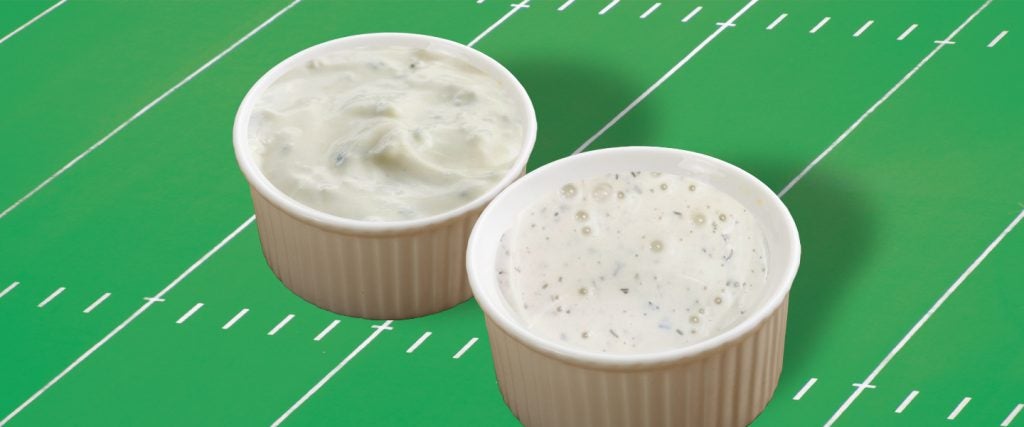Forget Thanksgiving. The most gluttonous day of the year is Super Bowl Sunday, where bowl after bowl and paper plate after paper plate is filled with finger-food bacchanalia that would make even the mad genius responsible for the TGI Friday’s appetizer selection blush (and certainly the ancient Romans). And so, all week leading up to game day, we’ll be offering up our own menu of scientific investigations, origin stories and majestic feats of snacking that not even the biggest sporting event of the year can top. Read all of the stories here.
Admittedly, I approach any topic connected with bleu cheese dressing with a heaping helping of bias. From the time I was 10 years old, I was inculcated by my father and grandfather to believe that a house salad bereft of bleu cheese simply wasn’t a salad worth honoring with a baptism by your teeth. Ranch was for children, French was gross, Italian was a distant second and what is Thousand Island anyway? (Don’t send me a link — even this one; I don’t care that much.)
Don’t get me wrong: Bad bleu cheese dressing is obviously a thing that exists, and there’s nothing more disappointing than sinking your incisors into crisp salad lettuce, only to be let down by bland bleu cheese, bereft of its trademark sharpness, with a sour aftertaste and not nearly enough salt to carry it through to the finish. However, when your salad or your chicken wings have been joined by delicious, chunky bleu cheese, I contend that there’s nothing better.
So… (*Seinfeld voice*) what’s the deal with bleu cheese dip? Is there any difference between it and bleu cheese dressing? I never had an issue dipping my buffalo chicken into bleu cheese dressing in the past, so what makes the dip so special? Is it just bleu cheese dressing with a thickener like corn starch added to it?
To unravel such a conundrum, we apply the magic of juxtaposition! If we take some Ken’s Steakhouse Bleu Cheese Dressing and list its ingredients, we see that it’s predominantly made of:
- Soybean oil
- Cultured buttermilk
- Bleu cheese (cultured pasteurized milk, salt, enzymes, penicillium roqueforti, natamycin)
- Distilled vinegar
- Egg yolk
Now, when we examine a jar of Litehouse Chunky Bleu Cheese Dressing and Dip, we find that it’s primarily:
- Canola Oil
- Non-fat buttermilk (whey, water, skim milk powder, corn starch, tapioca starch, carrageenan, locust bean gum, culture)
- Bleu cheese (milk, salt, culture, enzymes)
- Water
- Egg Yolk
So far, when you get right down to it, there’s not much difference between the bleu cheese dressing, and the substance advertised as a dual bleu cheese dressing and dip, at least as far as the mass produced, commercial substances are concerned.
Now let’s shift our focus to the homemade segment of the bleu cheese economy. If we evaluate the bleu cheese dressing recipe of Inspired Taste, we have a simpler ingredient list of sour cream, mayonnaise, bleu cheese, parsley, lemon juice, salt, pepper and either milk or buttermilk.
Then, when you look over at a bleu cheese dip recipe — courtesy of 15 Spatulas — you see that the dip consists of bleu cheese crumbles, sour cream, mayonnaise, buttermilk, lemon, salt and pepper.
Essentially, at least as far as bleu cheese is concerned, bleu cheese dressing and bleu cheese dip are interchangeable whether you’re buying them off grocery store shelves or mixing them together on your own countertop. As a little parting advice, I’ll admonish you that no matter how you choose to enjoy your bleu cheese, always make sure it’s chunky. After all, as Dusty Rhodes (probably) once said, “If it ain’t chunky, it ain’t funky!”

